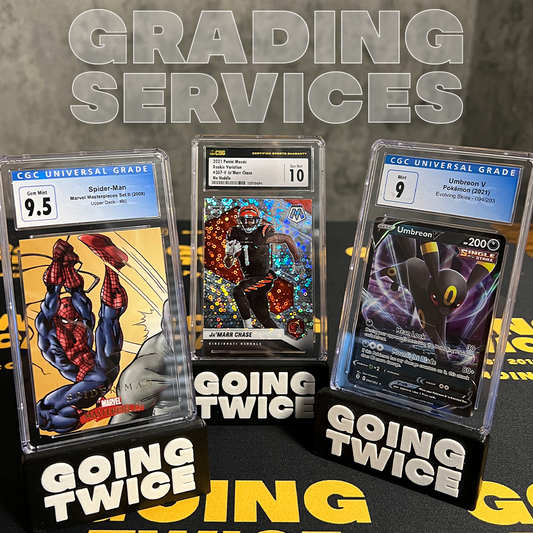How the Home Run Chase saved the graded card industry.
Play Ball!
The oldest surviving baseball card dates back to the 1860s if you can believe it! And the first commercially produced baseball trading cards emerged in 1868, manufactured by Peck and Snyder as a form of advertising. The cards were quickly included in cigarette packs and other tobacco products and later in candy packs such as chewing gum. By the mid-century, Topps was the dominant producer of baseball cards until a 1975 lawsuit labeling Topps a monopoly allowed others into the market. By the 1980s baseball cards were incredibly popular and manufactured by multiple companies leading to lots of overproduction and a slowdown in the market. This is often referred to as the “Junk Card Era.”

Special inserts or “chase” cards came on the scene in the early 1990s allowing for more expensive packs and card values. The 1994 players’ strike had caused a sharp decline in collecting and interest in baseball cards causing some companies to consolidate or stop production. In 1997 card companies began to create cards containing swatches of uniforms and other baseball equipment and began the production of the first “one-of-one” cards creating the ultimate chase cards. Suddenly collectors saw the value in opening packs and manufacturers were able to charge more for premium boxes containing a shot at a chase card.
A nation Captivated
We look back at the 1998 single year home run record race as a turning point for baseball in the modern age. Watching Sammy Sosa and Mark McGwire slug it out each night on tv brought fans back to baseball after the bitter feelings and disillusionment born out of the 1994 strike. Baseball became America’s game again as we watched Sosa and McGwire blow past Roger Maris’ single season home run mark of 61 (held since 1961). The 1998 home run chase changed the baseball card market and suddenly people were clamoring for Sosa and McGwire rookie cards. Prices began to rise and people looked at the cards as an investment that would only continue to grow in value.
Getting the Grade
As any card collector will tell you, condition matters. Baseball cards, especially with their delicate corners and easily scuffed surfaces, are hard to maintain in good condition. Grading seems like the obvious answer, doesn’t it? Well, not so much… By the mid-90s, companies like PSA (Professional Sports Authenticator) which was founded in 1991, were struggling and PSA was even rumored to be considering closing up shop. The collecting boom of the 80s had faded and there was very little market for baseball cards especially after the 1994 players’ strike. People were pissed and not interested in buying, let alone grading baseball cards. (Also note that you could not grade as an individual collector the way we do today. Instead you had to send your cards via a dealer adding additional steps to the process.) Enter the 1998 home run race and everything changed. People suddenly saw the value in preserving their cards for the future and what better way to do that then grading. Grading also became the way that you authenticated cards and established a quantifiable level of condition (aka the grade). Prior to 1998, PSA graded approximately 1 million cards but after… they’ve graded at least 1 million cards every single year with present day numbers going even higher! Take into account that SGC (Sportscard Guaranty) opened in the summer of 1998 and BGS (Beckett Grading Services) began offering grading in 1999, you can say grading was finally taking off. Coincidence? I think not.




